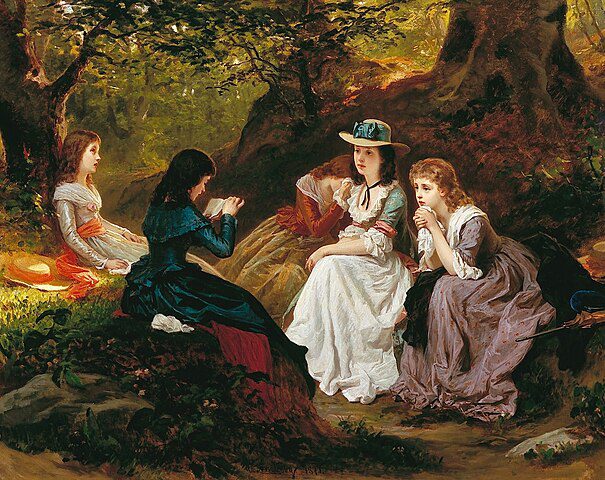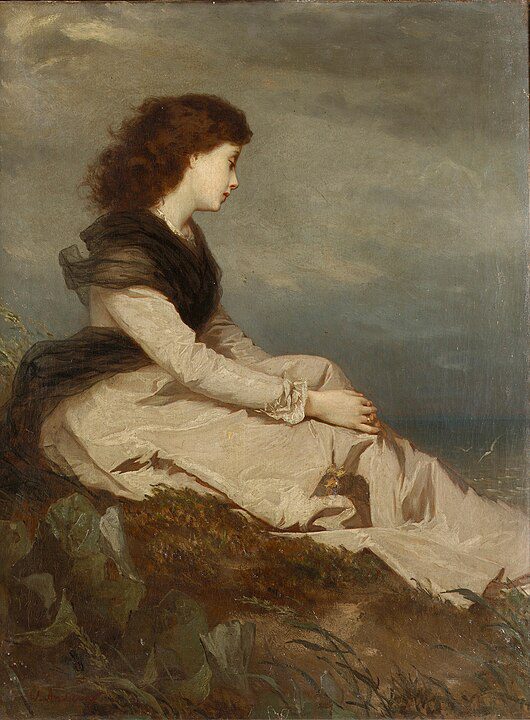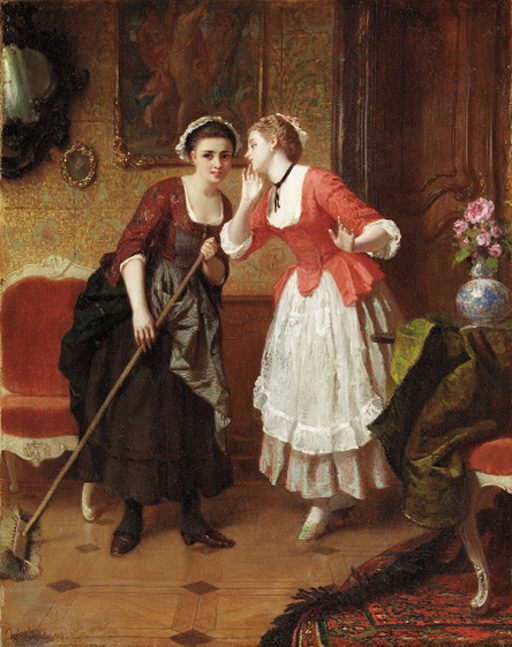
Wilhelm Amberg, a German painter and illustrator, was born on September 2, 1822, in Munich, Bavaria. He became known for his contributions to the genre of genre painting and illustration during the 19th century. Amberg’s artistic career unfolded against the backdrop of a period marked by social and cultural transformations, and his works reflect the nuances of everyday life, often infused with a touch of humor and sentiment.
Amberg received his artistic training at the Royal Academy of Fine Arts in Munich, studying under the renowned painter Peter von Cornelius. His early works, influenced by the prevailing academic traditions, focused on historical and biblical subjects. However, it was his later engagement with genre scenes and illustrations that brought him widespread recognition.

One of Amberg’s notable accomplishments was his collaboration with the German humorist and satirist Wilhelm Busch. Together, they created a series of illustrated stories, including “Max und Moritz,” which later became one of the most famous works in German literature. Amberg’s illustrations for “Max und Moritz” captured the mischievous antics of the protagonists with humor and visual flair.
Everyday experiences
Amberg’s genre paintings often depicted scenes from contemporary urban life, emphasizing the everyday experiences of the middle class. His works, such as “Die stumme Rüge” (The Silent Reproach) and “Der Bittsteller” (The Beggar), showcased his ability to capture the subtleties of human interaction and emotion.

In addition to his illustrations and genre paintings, Amberg also ventured into historical and mythological subjects. His painting “Die Erschaffung des Menschen” (The Creation of Man) exemplifies his academic training and skill in handling large-scale compositions.
observing humanity
Amberg’s ability to infuse his works with a sense of narrative and his keen observation of human behavior contributed to his success as an artist. His illustrations, characterized by a combination of wit and charm, resonated with a broad audience.
Wilhelm Amberg continued to paint and exhibit his works throughout his career, earning accolades and recognition for his contributions to the art world. He passed away on January 10, 1901, leaving behind a legacy that reflects the evolving artistic landscape of 19th-century Germany.

Today, Wilhelm Amberg is remembered for his role in the popularization of illustrated literature, particularly through his collaboration with Wilhelm Busch. His genre paintings and illustrations offer a glimpse into the cultural and social milieu of his time, capturing the nuances of human experience with both lightheartedness and depth.




